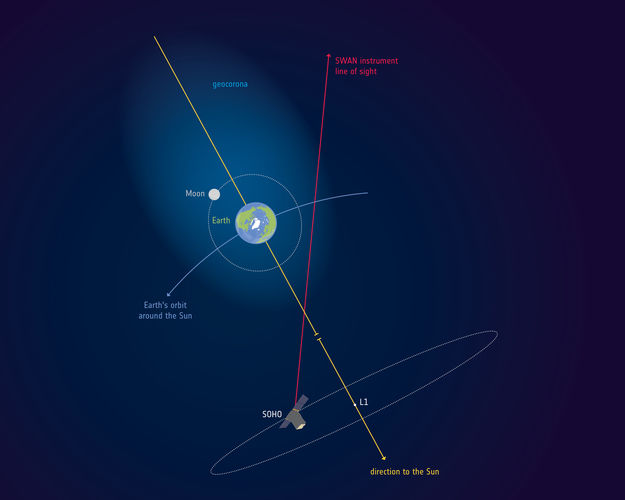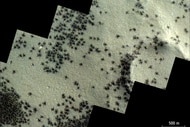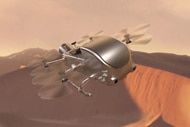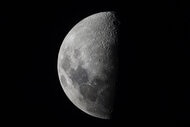Create a free profile to get unlimited access to exclusive videos, sweepstakes, and more!
Earth’s atmosphere goes to the moon and back... and beyond
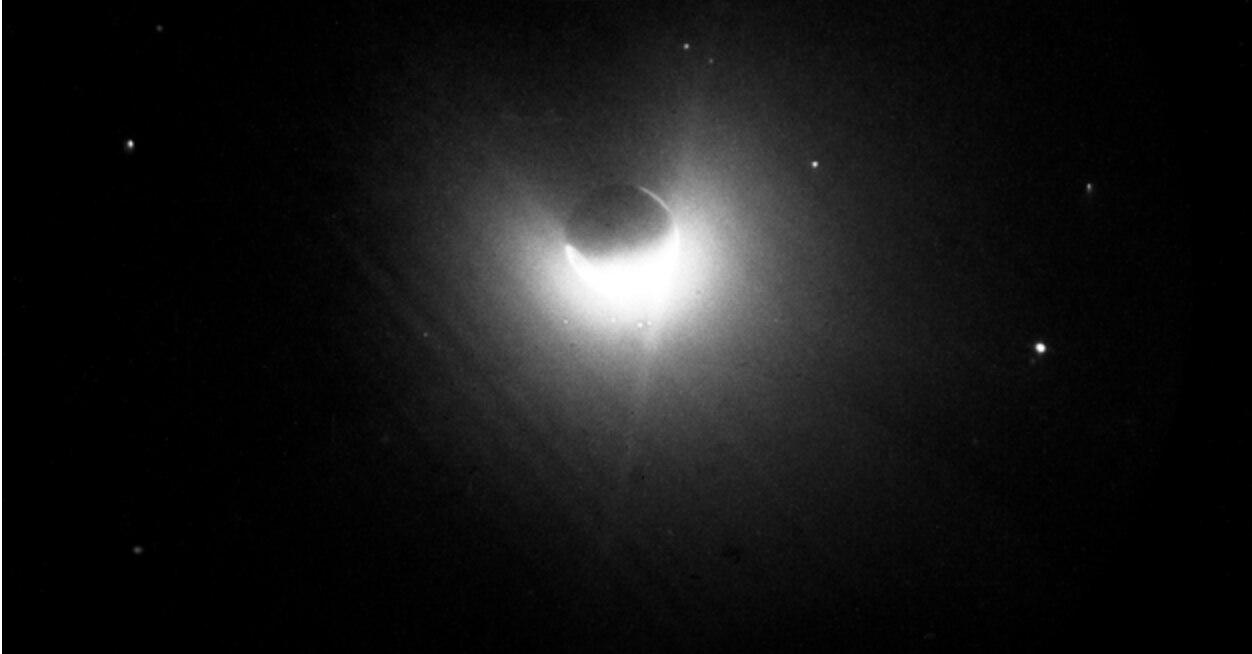
You’re never going to gaze at the sky the same way again.
While the blue skies you see from terra firma are not what an astronaut would be staring up from the moon, something of our planet still lingers in the dark expanse of space. You can’t see it—but it’s there. A recent study shed new light on past observations by ESA and NASA’s Solar and Heliospheric Observatory (SOHO) and found that the gaseous layer otherwise known as our atmosphere extends so far, the moon is actually flying through it.
Earth’s geocorona, the cloud of hydrogen atoms in our upper atmosphere that merges with outer space, extends a little over 300,000 miles. That’s 50 times the diameter of the planet. Planets with hydrogen in their exospheres (that includes Mars and Venus) exhibit water vapor closer to their surfaces. The spacecraft used hypersensitive sensors in its SWAN instrument to find out exactly how far our atmosphere ventures by tracing hydrogen.
"This is especially interesting when looking for planets with potential reservoirs of water beyond our solar system," Jean-Loup Bertaux, co-author of the study and former principal investigator of SWAN, said.
When Apollo 16 landed on the lunar surface in 1972, the first telescope astronauts brought to the moon captured an otherworldly image of our geocorona (above). They had no idea they were actually standing in it.
SWAN was able to detect hydrogen atoms by observing a wavelength of light that is otherwise absorbed by Earth’s atmosphere. The Lyman-alpha wavelength, which happens when the electron in a hydrogen atom falls to an orbital further from the nucleus, is absorbed and emitted by these atoms. SWAN’s hydrogen absorption cell was able to separate the Lyman-alpha light coming from the geocorona from anything else floating around.
What these observations revealed was that hydrogen atoms in the geocorona on Earth’s dayside are compressed by sunlight, and the same solar radiation increases the density of those atoms in an area on the nightside. At least the UV rays hitting the moon aren’t intense enough to harm the astronauts NASA wants to put on the moon by 2028.
"There is also ultraviolet radiation associated to the geocorona, as the hydrogen atoms scatter sunlight in all directions, but the impact on astronauts in lunar orbit would be negligible compared to the main source of radiation–the sun," explained Bertaux.
Astronomers are the ones who actually have something to worry about, because the geocorona could get in the way of space telescopes observing stars and galaxies in ultraviolet wavelengths. The read they get on the chemical composition of these cosmic objects could be off.
Next time astronauts touch down on the moon, we will all be under one geocorona. Think about that next time you look up.
(via ESA)
